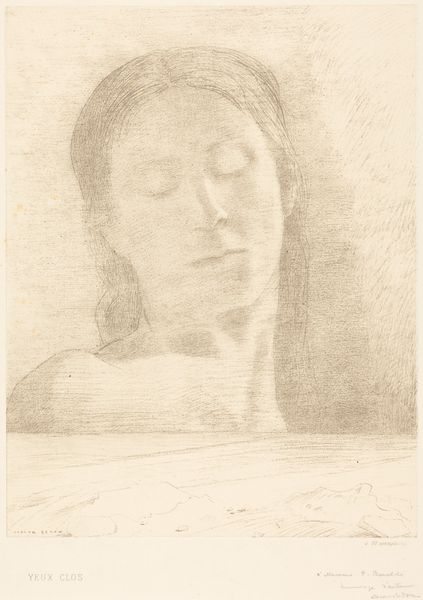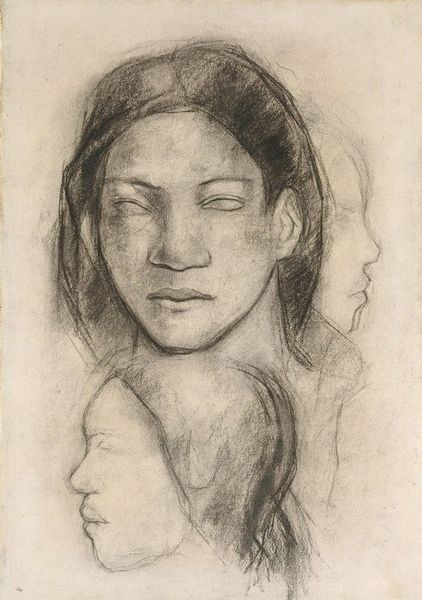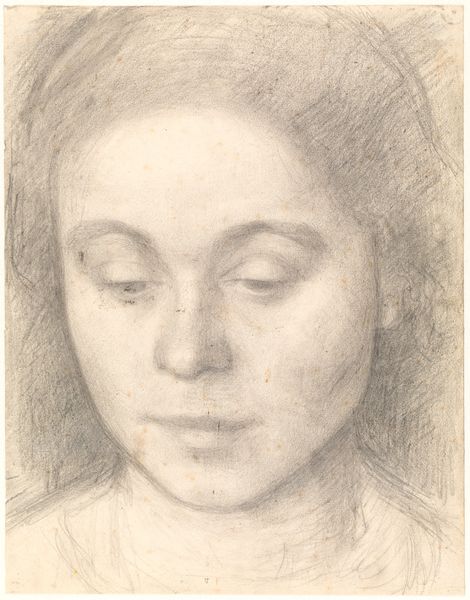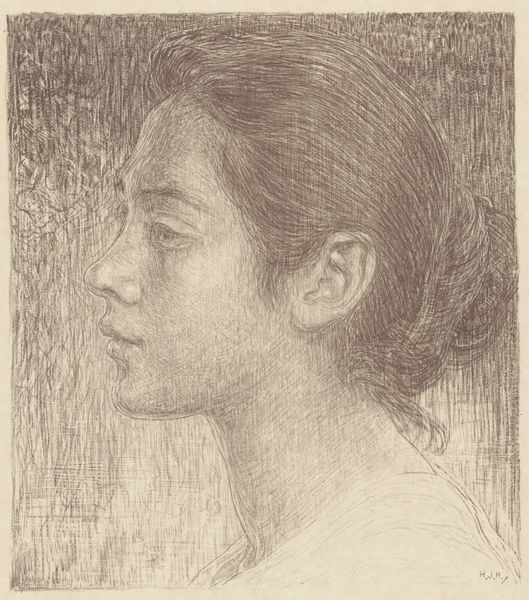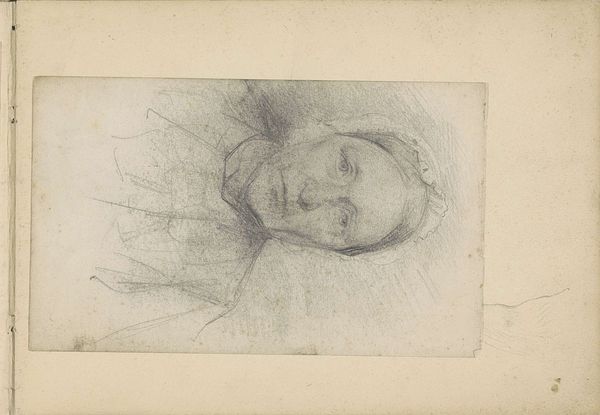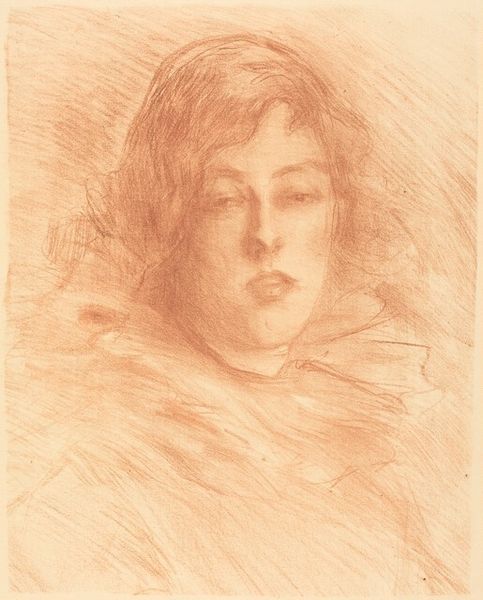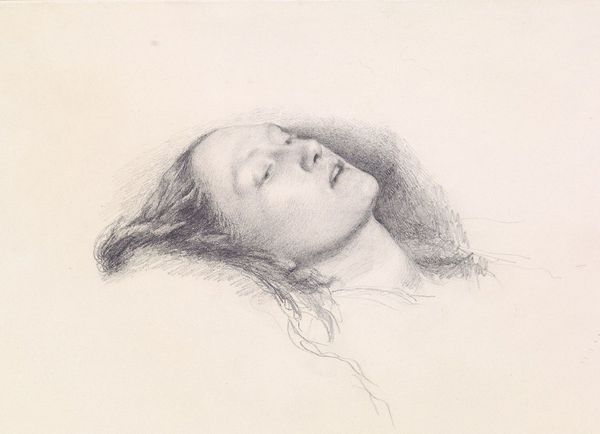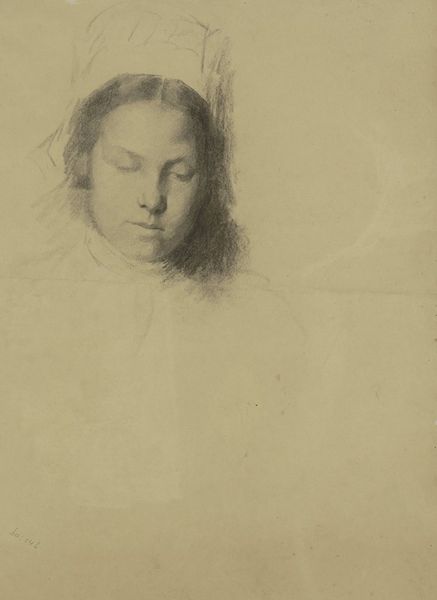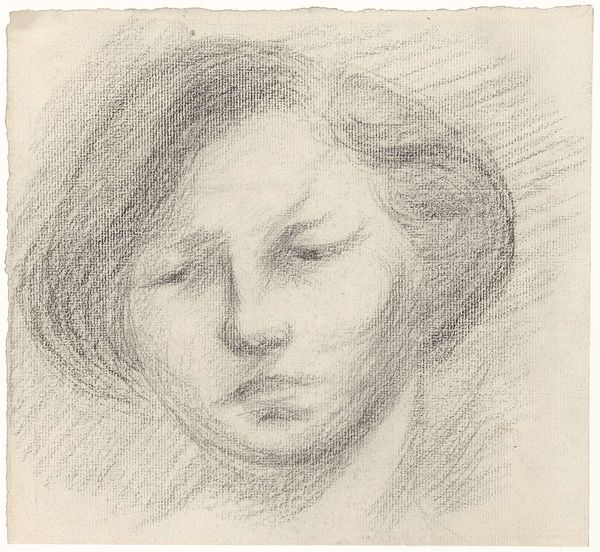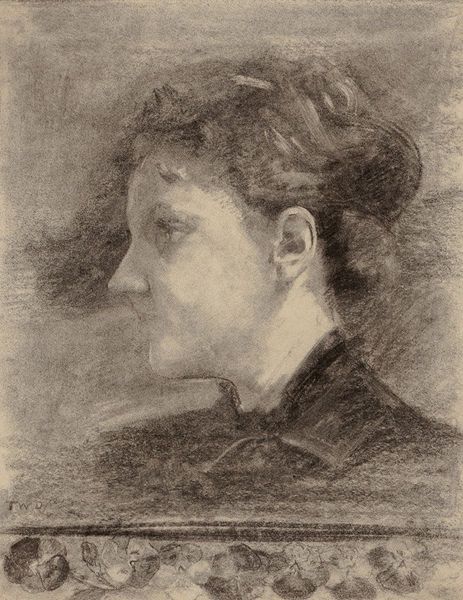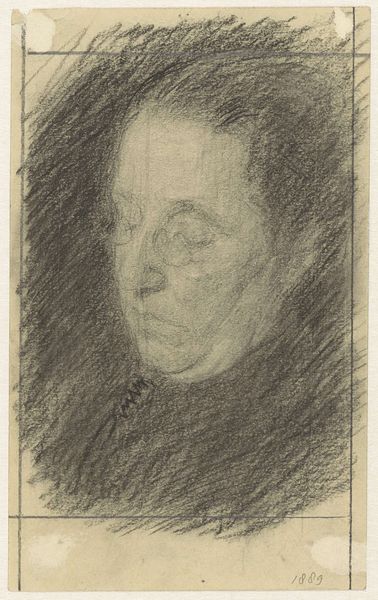
drawing, dry-media, pencil
#
portrait
#
pencil drawn
#
drawing
#
charcoal drawing
#
dry-media
#
pencil drawing
#
pencil
#
symbolism
#
portrait drawing
Copyright: Public Domain: Artvee
Curator: Odilon Redon's "Eyes Closed," created around 1890. It's a dry-media drawing, primarily pencil on paper, isn't it? The delicate hatching gives it such a quiet, almost ghostly quality. Editor: Ghostly is right. It has a strange, somber feel. It almost feels like the subject is turning inward, retreating from the world. I'm wondering, in what context was Redon producing these works? What larger conversations about identity and inner experience might he have been participating in? Curator: Well, Redon existed in a nexus of symbolist circles where material processes reflected a shift toward interiority. This era favored dry media because of their accessibility and tactile quality. Pencils, charcoal—these democratized artistic creation. Consider how industrialization had reshaped labor—such readily available materials altered artistic production. Editor: Absolutely. It’s impossible to detach this serene drawing from the era’s turbulent anxieties. The closing of the eyes – is that a rejection of the changing societal landscape around women? A reclamation of self in an increasingly surveilled, patriarchal society? Curator: Or is it perhaps simpler? We can look at the pigment’s granularity. These materials are often viewed as tools for sketches or preparatory works, rather than being the end product. But Redon elevates them to a final, finished state. We are forced to consider his choice of materials. What informed this conscious decision? Editor: True, but even within a deliberate act such as material choice, societal conditions always exert some influence. This period was rife with artistic and intellectual experimentation with the meaning of dreams and spirituality, fueled by political unrest, a rapidly modernizing Europe, shifting gender dynamics. The Symbolists turned to the intangible. Curator: I see what you mean. Regardless, Redon masterfully transformed humble materials into something hauntingly beautiful, demanding us to consider the artistic labor involved. Editor: Yes. Ultimately, though, the power here lies in that suggestion of inward retreat. Perhaps an enduring reminder of the need for interior space amid societal demands, expressed through humble materials, of course.
Comments
No comments
Be the first to comment and join the conversation on the ultimate creative platform.
